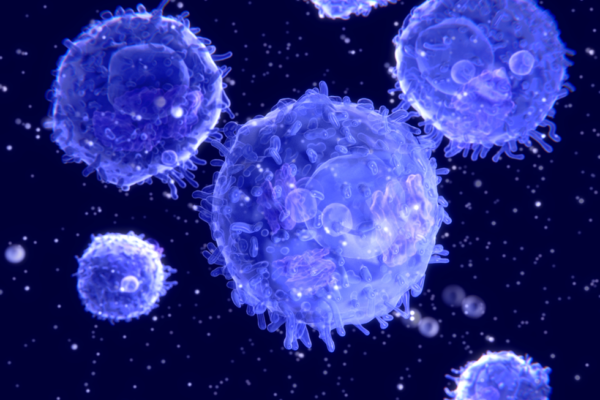A new technology that identifies disease-related antigens and T cells that could potentially destroy them could speed the development of new therapies to treat diseases as diverse as influenza and cancer.
Biomedical engineers at The University of Texas at Austin have found a faster, more efficient and more reliable way to identify combinations of antigens — substances that alert the human immune system to the presence of unwelcome cells — and T cell receptors (TCRs), which are the body’s most important molecules in fighting disease and infection. Identifying these combinations is crucial in the development of disease vaccines and immunotherapy drugs.
The research team published their findings today in Nature Biotechnology.
“T cells play a central role in the human immune system, as each expresses its own unique TCRs, a kind of defense system that identifies and then destroys unwelcome pathogens and cancer cells,” said the study’s lead author Jenny Jiang, an associate professor in the Cockrell School’s Department of Biomedical Engineering and the Dell Medical School’s Department of Oncology. “Effective vaccine and cancer immunotherapy development is contingent on understanding how TCRs behave.”
Jiang, who is also an associate and her team developed a DNA-barcoded method that categorizes thousands of TCRs and their antigens in just two days. Until now, the technology did not exist to link TCRs and their antigens at a single-cell level in a high-throughput manner. Researchers were previously able to identify only about 100 TCRs and their antigens at a time and had to wait up to two months for the results.
Jiang used synthesized strips of DNA molecules as templates to create a large library of peptide antigens in test tubes. The DNA molecules serve as individual barcode IDs, and using high-throughput sequencing, they can be read to discover which specific antigen or antigens bind to the individual TCRs, in a way that is significantly faster and more efficient than previous methods.
When it comes to cancer, the potential of T cells in fighting the disease is widely recognized. But how to select T cells that recognize only cancer antigens is still a challenge. TCRs are cross-reactive, meaning a single T cell can recognize more than one similar-looking antigen, which could be a bad sign for T-cell-based cancer immunotherapy, Jiang said.
“We and others in the field have shown that T cells from healthy individuals are a good way to isolate cancer-antigen-recognizing TCRs,” she said. “We need to be just as good at finding these TCRs as they are at finding cancer antigens.”
In general, there are two types of T-cell-based cancer immunotherapies: One is to engineer a patient’s T cells with a new TCR that recognizes cancer antigens and will direct T cells to kill cancer cells. The other is to use a set of the patient’s own personalized peptides that harbor cancer mutations as vaccines. Also known as a neoantigen vaccine, this stimulates a patient’s T cells to kill any cancer cells.
Using the UT team’s new technology, T cell biologists will be able to identify many more neoantigens simultaneously as well as those that are less likely to induce cross-reactive TCRs, which could lead to safer and faster ways to implement T-cell-based cancer immunotherapy.
“We are very excited about our new technology, which is a major step forward for disease research of all kinds, including cancer,” Jiang said. “Knowing what TCRs bind to what antigens really is the holy grail for T cell biologists.”
This research was funded by the National Institutes of Health, the National Science Foundation, the Welch Foundation and the Robert J. Kleberg, Jr. and Helen C. Kleberg Foundation.




